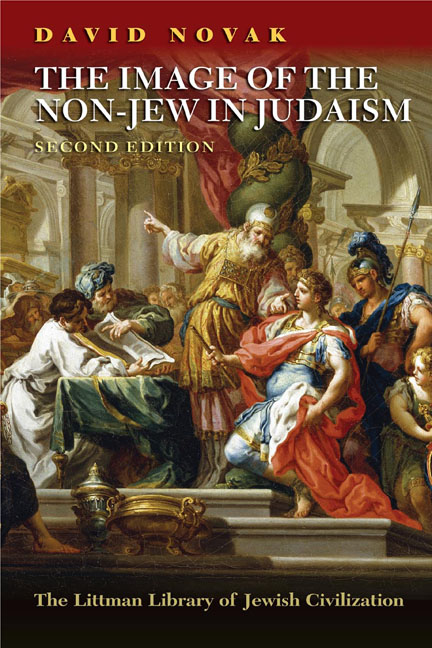Book contents
- Frontmatter
- Dedication
- Preface
- Acknowledgments
- Contents
- Chapter Summaries
- 1 The Origins of the Noahide Laws
- 2 The Law of Adjudication
- 3 The Law of Blasphemy
- 4 The Law of Idolatry
- 5 The Law of Homicide
- 6 The Law of Sexual Relations
- 7 The Law of Robbery
- 8 The Law of the Torn Limb
- 9 Aggadic Speculation
- 10 Maimonides’ Theory of Noahide Law
- 11 Albo's Theory of Noahide Law
- 12 Late Medieval Developments
- 13 Moses Mendelssohn and his School
- 14 Hermann Cohen and the Jewish Neo-Kantians
- 15 Conclusion
- Afterword
- List of Abbreviations
- Notes
- Bibliography
- Index
9 - Aggadic Speculation
- Frontmatter
- Dedication
- Preface
- Acknowledgments
- Contents
- Chapter Summaries
- 1 The Origins of the Noahide Laws
- 2 The Law of Adjudication
- 3 The Law of Blasphemy
- 4 The Law of Idolatry
- 5 The Law of Homicide
- 6 The Law of Sexual Relations
- 7 The Law of Robbery
- 8 The Law of the Torn Limb
- 9 Aggadic Speculation
- 10 Maimonides’ Theory of Noahide Law
- 11 Albo's Theory of Noahide Law
- 12 Late Medieval Developments
- 13 Moses Mendelssohn and his School
- 14 Hermann Cohen and the Jewish Neo-Kantians
- 15 Conclusion
- Afterword
- List of Abbreviations
- Notes
- Bibliography
- Index
Summary
The Offering of the Torah
We have documented that the development of the Noahide laws can be seen in two perspectives: (1) as the pre-Sinaitic law for all humanity including Israel; (2) as the post-Sinaitic law for all humanity excluding Israel. The first provided a standard for understanding the precondition for the Torah's revelation; the second offered criteria for understanding what Jews could respect, even obey, in the non-Jewish world. This second perspective developed principally along legal lines, aiding Jews in negotiating with gentile authority and gentile religion without capitulation or complete condemnation. The first perspective matured, on the other hand, through theological categories, making it more speculative than normative. This speculation was concerned with the relevance of universal law for the understanding of Judaism itself.
This view emerges in the following aggadah:
“And he said that the Lord came forth from Sinai … ” (Deut. 33:2). When the Holy One, Blessed be He, appeared (ke-she-nigleh) to give the Torah to Israel, He did not appear to Israel alone but to all the nations.
The text continues and states that the descendants of Esau refused the Torah because of the prohibition of murder; the Ammonites and Moabites because of prohibition of incest; and the Ishmaelites due to the prohibition of robbery. In each of these cases verses from Genesis are brought to show that these nations rejected the Torah because it contradicts behavior that characterizes the mand for which the Torah had condemned them. (The prohibition of idolatry, however, is not mentioned, but of course one would be pressed to find explicit condemnation of gentile idolatry in the Bible.) The text concludes:
Not only did they not accept (shel l'o sham'u) it, but even the seven commandments which the Noahides accepted upon themselves (she-kibblu aleihem) they were unable to persevere in them, finally casting them off (ad she-parkum). When the Holy One, Blessed be He, saw this, He, therefore, gave themto Israel … so Israel accepted the Torah with all its ramifications (be-fayrusheyha) and details, plus those seven commandments which the Noahides were unable to preserve and which they cast off. Israel came and accepted them.
- Type
- Chapter
- Information
- The Image of the Non-Jew in JudaismThe Idea of Noahide Law, pp. 144 - 152Publisher: Liverpool University PressPrint publication year: 2011

